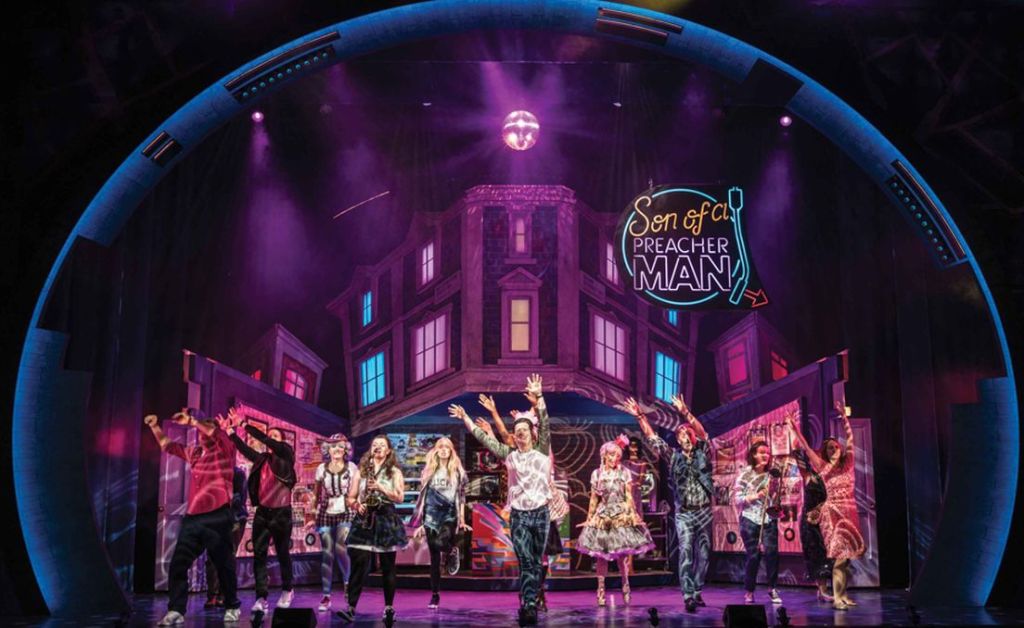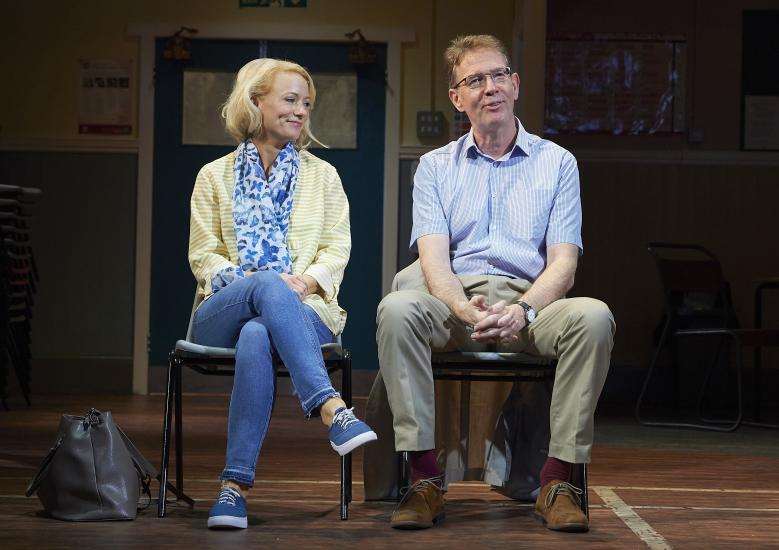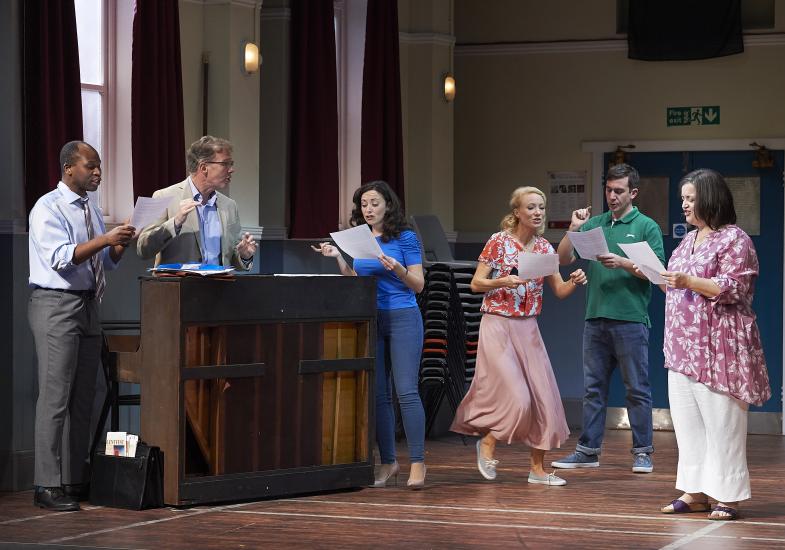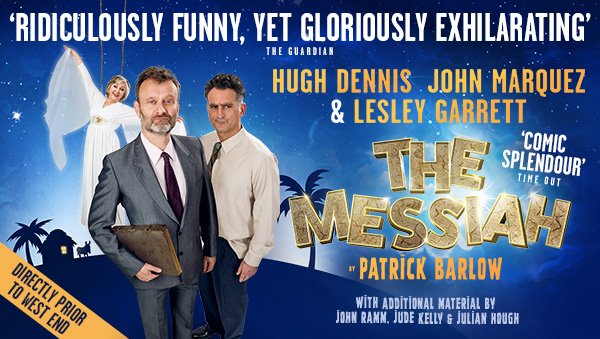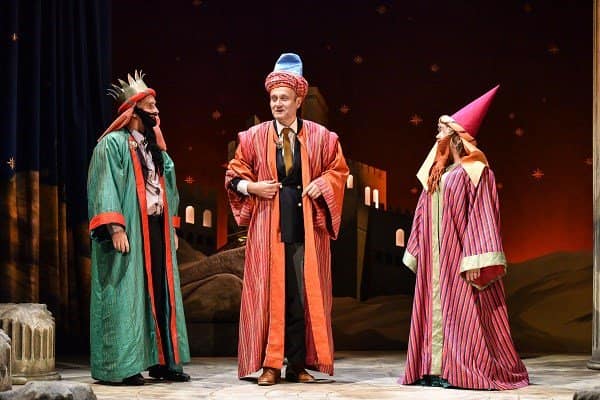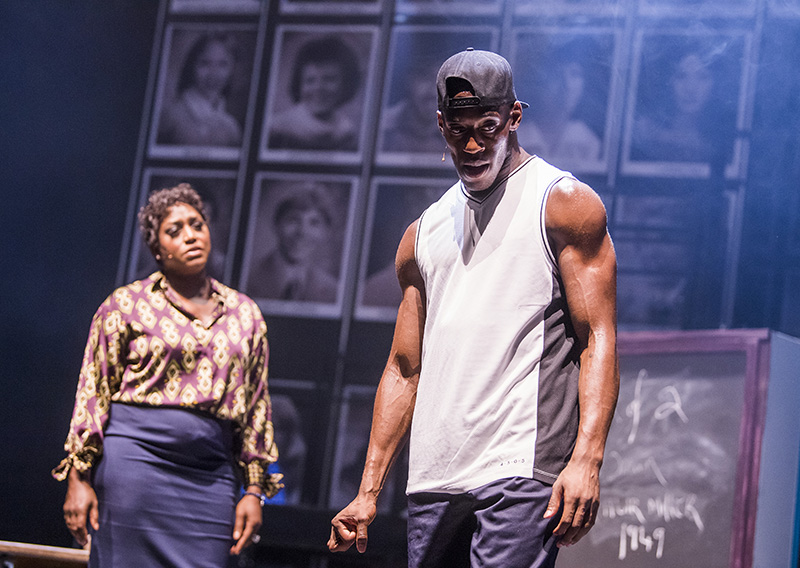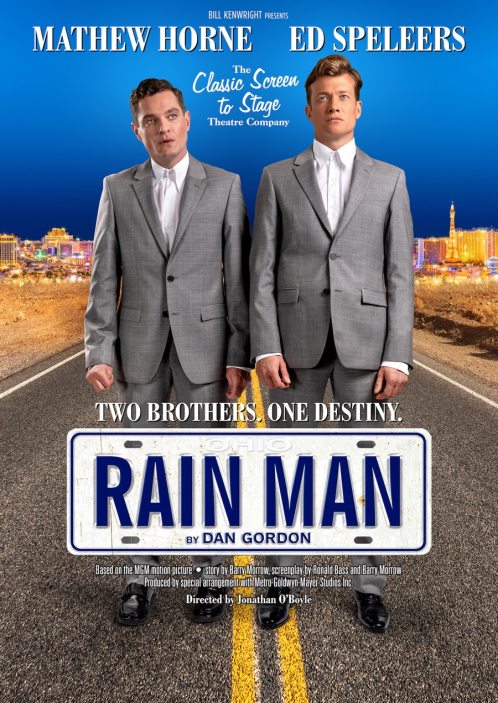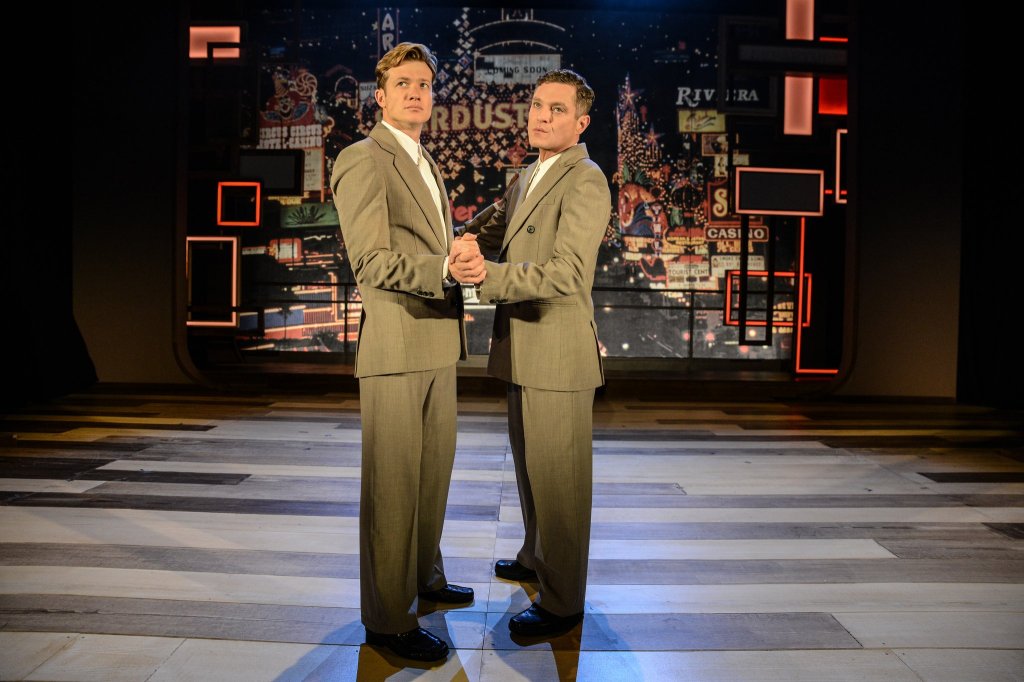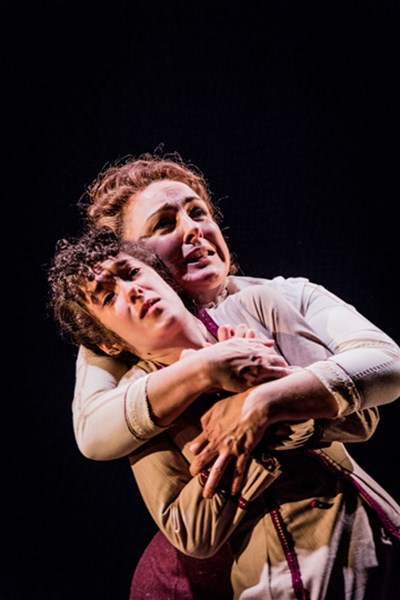
Back in the sixties, the most happening record shop in Soho was run by a mysterious individual known only as the Preacher Man. It was famed not only for its range of music but also for the proprietor. Dispensing wisdom along with records, he quickly became a legend.
But the sixties are long gone and so is both the shop and the Preacher Man himself. The building’s still there though – although today it’s a coffee shop, run by Simon (Nigel Richards), the Preacher Man’s son. Three lovelorn individuals – Alison (Michelle Gayle), Kat (Alice Barlow) and Paul (Michael Howe) – are drawn to the shop, hoping against hope that the magic of the place still lingers.
Will the son of a Preacher Man be able to help them find happiness?
You have to give the production top marks for not going down the crushingly obvious route of having a real Preacher Man’s son centre stage. The conceit of a long vanished record shop (contrasting the optimism of the sixties with the bleaker realities of today) works well, although it probably won’t be too much of a spoiler to reveal that there are happy endings all round (even if some don’t end up with the people you might have expected).

Having four characters – Simon, Kat, Alison and Paul – who are all, in their own ways, looking for love is another good move as their intermingling stories ensures that we’re not just following one individual all the way through (which, unless their tale of woe was very well crafted, could become monotonous).
Paul, Alison and Kat are drawn from different generations. Paul was a regular at the Preacher Man back in the day and has been haunted ever since by the memory of a young man who was also ever-present. Handled sensitively, this is easily the most involving of the various plot-lines. Alison – a tutor in love with one of her pupils (although he’s over the age of consent so this isn’t quite as icky as it seems) – has a slightly less involving tale (although Michelle Gayle handles the dramatic scenes very well) whilst Kat’s love woes (she’s obsessed with a plumber who appears to be a perfect match for her, although he doesn’t seem at all interested in reciprocating) is the least interesting.
But this isn’t really too much of a problem since you’re never too far away from yet another classic song. Son of a Preacher Man is one of those productions which requires all-rounders – it’s not enough to simply be a great actor, singer or musician, ideally you need to be all three.
Michelle Gayle and Alice Barlow share top billing and both deliver in spades. Barlow’s belting Son of a Preacher Man naturally enough closes proceedings whilst Gayle has a stand-out moment with All I See Is You. Michael Howe, despite a long list of credits, might not be such a familiar face, but he’s also incredibly good value – his duet with Ellie-Jane Goddard (Spooky) is yet another highlight, although it’s a slight pity that the whole song wasn’t performed acoustically, as the opening few minutes (before the band kicked in) were especially appealing.

It takes a while before Nigel Richards gets an opportunity to sing, but when he finally does he proves that he’s no slouch. Richards’ main role though is to keep the story moving along. As the slightly shy and socially awkward Simon (who’s spent his life living in the shadow of his father) he gets some of the best comic moments, as his well intentioned attempts to play cupid never quite go to plan ….
Michelle Long, Kate Hardisty and Cassiopeia Berkeley-Agyepong, as the Cappuccino Sisters, are another plus point of the production. Simon’s waitressing staff, they not only have a lively sense of humour but prove to be no mean slouches when it comes to singing and playing various instruments. The rest of the cast – Lewis Kidd, Liam Vincent-Kilbride, Jon Bonner, Rachael McAllister, Ellie-Jane Goddard, Gary Mitchinson and Jess Barker – are also kept busy (many of them playing various roles). Always a pleasure when the whole cast are top notch, as here.
Although there’s only a small orchestra pit of three – Brady Mould, Doug Weekes and Nick James – most of the onstage performers also wield instruments at various points, so there’s a very full sound throughout.
Song-wise, pretty much everything you’d expect to hear is included. Goin’ Back, I Close My Eyes and Count To Ten, The Look of Love, Wishin’ and Hopin’, In The Middle of Nowhere, How Can I Be Sure?, etc.
Craig Revel Horwood (responsible for the direction and musical staging) drops in a fair few dance moves during some of the numbers (especially for Alice Barlow, who at one point is twirled around in a very energetic fashion). And although there are numerous scene changes, these are dealt with quickly and effectively (nothing kills the atmosphere like having to wait any length of time for the stage to be reset).
A feel-good story, albeit with a few dramatic moments, Son of A Preacher Man bowls along at a very decent rate – helped by the strong ensemble headed by Michelle Gayle, Alice Barlow, Nigel Richards and Michael Howe whilst the stream of classic hits doesn’t hurt either. Definitely one worth catching.
